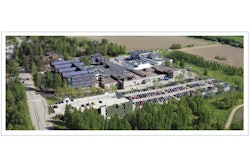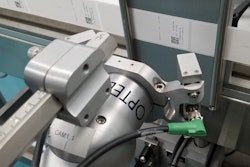
Transporting temperature-sensitive pharmaceuticals, biologics and combination product therapies from the point of manufacture to a medical facility—and ultimately the “last mile” to the patient—requires the prevention of temperature excursions throughout the complex supply chain.
If you’ve attended “cold chain” conferences, you’ve likely heard anecdotes about pallets containing high-value medications sitting for hours on airport tarmacs in excessive heat or extreme cold temperatures. But what happens if a delivery vehicle carrying such therapies breaks down on the road?
A June 14, 2018 Digital Journal article says, “The adoption of temperature-controlled packaging systems depends largely on the aspect that mechanical issues and external forces do not inhibit packaging efficiency. This has led to a surging adoption of passive temperature-controlled packaging systems over their active counterparts.”
The article points to Future Markets Insights research forecasting a 9% Compound Annual Growth Rate (CAGR) between 2017 and 2027 for the global passive temperature-controlled packaging market, predicting it will reach a value over $18 billion by 2027.
FMI notes, “Passive temperature-controlled packaging consists of specially designed packaging shippers and containers that maintain a controlled temperature environment to limit exposure of the packed product to high or low temperatures during transit. In recent years, the need for transporting specialized pharmaceutical products globally has significantly risen, and so the need for its packaging and logistics.”
The report also expresses some limiting factors, saying, “However, [the] high cost of advanced Temperature Controlled Packaging (TCP) restrain those to be utilized for cheaper pharmaceutical products, and hence poses a significant restraint for the growth of passive temperature-controlled packaging globally. This, coupled with increasing preference towards rental and reusable packaging, is further shifting revenues from the sales of passive temperature-controlled packaging on a down side.”
Reusability factors in
Reusability also factors into global temperature-controlled packaging in a report at XploreMR. It notes, “International organizations such as World Health Organization (WHO) are continuously focusing on reducing wastage of vaccines across the globe. As a part of this, various programs are initiated to monitor vaccine wastage at country levels. These programs also focus on proper handling and transportation of vaccines. This particular factor surges the demand for temperature-controlled packaging in the healthcare sector. Another factor that is creating a positive impact on the market is an unprecedented shift towards structurally complex biotechnology drugs over chemical-based drugs. Drugs used in the treatment of cancer or cold chain drugs such as insulin require constant temperature control.”
Outsourcing on the rise
FMI’s report also suggests a trend for both food and pharmaceutical manufacturers to outsource packaging and the transportation of temperature-sensitive products to third-party logistics firms. It notes, “Additionally, growing demand for passive temperature-controlled packaging solutions in developing countries has led many global passive temperature-controlled packaging solutions providers and 3PLs to expand their passive temperature-controlled packaging solutions offerings in countries such as China, India and Indonesia.”
A further challenge for temperature-controlled product packaging cited in new research from Absolute Reports points to the high cost of diesel and fuel maintenance. A market trend, says the report, is the integration of GPS tracking and temperature monitoring systems to help ensure successful deliveries.
Excursion resources
Even with the availability of monitoring devices, GPS and other technologies, temperature excursions do exist in the real world. Resources to help prevent or manage them include the following:
• U.S. Pharmacopeia’s <1079> provides general guidance about the storage, distribution and shipping of Pharmacopeial preparations.
• USP revised General Chapter <659> Packaging and Storage Requirements provides packaging definitions and information related to the storage and distribution of active ingredients, excipients, and medical products, such as pharmaceuticals, devices, combination products and dietary supplements.
• The Centers for Disease Control and Prevention’s temperature excursion checklist presents an easy-to-follow one-page list of actions to take in the event of an excursion.
• A Vaisala cold chain compliance “Application Note” offers regulations and standards for temperature-controlled supply chains citing guidance from the FDA and ICH (Intl. Conference on Harmonization of Technical Requirements for Registration of Pharmaceuticals for Human Use).






















